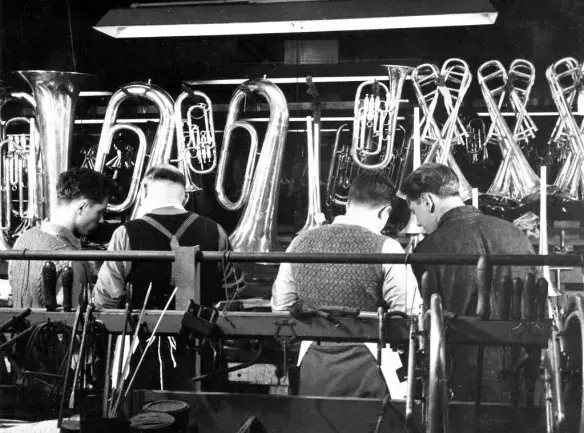
The Factory Design Pattern
In the realm of software engineering, design patterns serve as the guiding notes that compose robust and scalable code. Among these patterns, the Factory Design Pattern stands out as a fundamental melody, orchestrating the creation of objects without specifying their exact classes. In this article, we'll explore the Factory Design Pattern through the lens of Ruby, harmonizing its principles with the world of musical instruments.
Understanding the Factory Design Pattern
At its core, the Factory Design Pattern falls under the category of creational patterns, aiming to abstract the process of object creation. It provides an interface for creating objects in a superclass while allowing subclasses to alter the type of objects that will be created. This flexibility makes it an ideal choice for scenarios where the exact type of object needed is not known until runtime.
Setting the Stage: Musical Instruments as the Business Example
Imagine we're building a virtual music store application in Ruby, and we need to model different types of musical instruments such as guitars, pianos, and drums. Each instrument category has various types with distinct characteristics, making it an excellent candidate for applying the Factory Design Pattern.
Implementing the Factory Design Pattern in Ruby
Let's dive into the code and see how we can implement the Factory Design Pattern using Ruby.
# Abstract Instrument class
class Instrument
def play
raise NotImplementedError, "#{self.class} has not implemented method 'play'"
end
end
# Concrete Instrument classes
class Guitar < Instrument
def play
puts "Strumming guitar chords..."
end
end
class Piano < Instrument
def play
puts "Playing a melody piano..."
end
end
class Drum < Instrument
def play
puts "BOOM BOOM! BANG BANG! I'm drums..."
end
end
# Instrument Factory
class InstrumentFactory
def create_instrument(type)
case type
when :guitar
Guitar.new
when :piano
Piano.new
when :drum
Drum.new
else
raise ArgumentError, "Invalid instrument type: #{type}"
end
end
end
# Usage
factory = InstrumentFactory.new
guitar = factory.create_instrument(:guitar)
guitar.playIn this Ruby code snippet, we define an abstract Instrument class with a play method, which is overridden by concrete instrument classes such as Guitar, Piano, and Drum. We then implement an InstrumentFactory class responsible for creating instrument objects based on the provided type.
If we want to create different 'families' or categories of instruments, check out my blog post about the 'Abstract Factory' design pattern here: <a href="http://localhost:3001/posts/abstract-factory">http://localhost:3001/posts/abstract-factory</a>
Striking the Chords: Using the Factory Design Pattern
# Usage
factory = InstrumentFactory.new
guitar = factory.create_instrument(:guitar)
guitar.playBy utilizing the Factory Design Pattern, we can dynamically create different types of musical instruments without tightly coupling our code to specific instrument classes. This flexibility allows for easier maintenance, scalability, and extensibility of our application.
Conclusion: A Symphony of Code
In conclusion, the Factory Design Pattern is solid tool that every composer should use in their symphony of software development. By abstracting the creation of objects and decoupling the client code from the concrete implementations, this pattern empowers us to compose flexible and scalable solutions. Whether you're crafting virtual music stores or building complex software systems, keep the Factory Design Pattern in your tool belt.